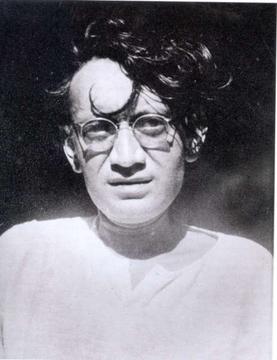
Darul Uloom Deoband, top madrasa in Indian subcontinent was founded some 155 years ago. It was founded on May 31 by renowned freedom fighter n great scholar Maulana Qasim Nanautwi n Rasheed Ahmad Gangoi, a scholar of hadith, freedom fighter and one of greatest sufis of his time. 

Mahmud Deobandi was its first teacher, while his namesake and renowned freedom fighter Mahmud Hasan was its first student. Nanotwi and Sir Syed Ahmad Khan founded two separate institutions, and both went on to become largest centres of educational excellence in their domains. 

While Maulana Qasim Nanotvi founded Darul Uloom, Sir Syed founded Aligarh Muslim University, a center of modern education. The 2 studied under same teachers at Delhi College. While praisng Maulana Qasim Nanotwi, Sir Syed said after Nanotwi's death: 

"The people thought that after Mawlana Muhammad Ishaq no man like him in all those qualities was to be born, but Mawlana Muhammad Qasim has proved by his consummate righteousness, religiosity, piety, abstinence and humility that, through the education and training of this city 

...of Delhi, Allah has created another man alike of Mawlana Muhammad Ishaq, rather superior to him in certain things… There are many people alive who have seen Mawlana Muhammad Qasim receiving education at Delhi at a very young age. He had studied all the books under the late
...Mawlana Mamluk 'Ali. From very beginning the signs of piety, abstinence, virtuousness n devotion to God were apparent from his ways n manners and the following couplet was perfectly applicable to him: 'Over his head through his intelligence was shining star of loftiness'."
When madrasa at Deoband was launched, it was a very modern institute with set syllabus and examination system, something very new at that time. Lucknow's Farangi Mahal, that was the trendsetter till that time didnt follow a set syllabi or examination system.
Darul Uloom had a formal look as the top guns of institutions had studied at the best colleges of time and the management of the madrasa too had spent their lives managing different institutions. To be true, they followed the British bureaucratic style of educational institutions
They followed the British bureaucratic style of educational institutions. Not just founders had studied in such institutions, many including three Deputy Inspectors of the Education Department, were government servants. This gave them definite advantage in professionally managing
It played major role in freedom movements. In 1913 , Nanautavi's pupil, Mahmud al-Hasan was a leader in the independence movement. He incited revolution through a scheme which the Rowlatt committee called the Silken Letters.
However, it failed and Mahmud n his followers were arrested and exiled. In 1920, he was returned from exile in Malta. His group, Jamiat Ulama which included Husain Ahmad Madani, Kifayatullah Dehlawi, Fakhruddin Ahmad, and , Hifzur Rahman Seoharwi, joined Indian National Congress.
Darul Uloom Deoband was in the forefront of opposing the Partition and the two nation theory of Muslim League and Jinnah. This group also had the support of Maulana Abul Kalam Azad, Hakim Ajmal Khan and other top Muslim leadership close to the Indian National Congress
Syllabus consists of many stages. 5-year Nazirah (primary course) teaches Urdu, Persian, Hindi and English. Next level is Hifze Quran. This involves the memorization of the Quran over two to four years. A few students will then choose Tajwid
Fazilat or post graduate course spans over eight years. It commences with Arabi Awwal, in which the basics of the Arabic language is the main aim, and finishes with Daura e Hadith, in which the main books of the saying of the Holy Prophet are taught.
A prerequisite for this course is completion of primary education. Memorization of the Quran is also recommended. Students who complete the Fazilat may use the title Alim or Maulvi. The Daurae Hadith (final year) class is taught in the basement of seven storied building.
• • •
Missing some Tweet in this thread? You can try to
force a refresh












